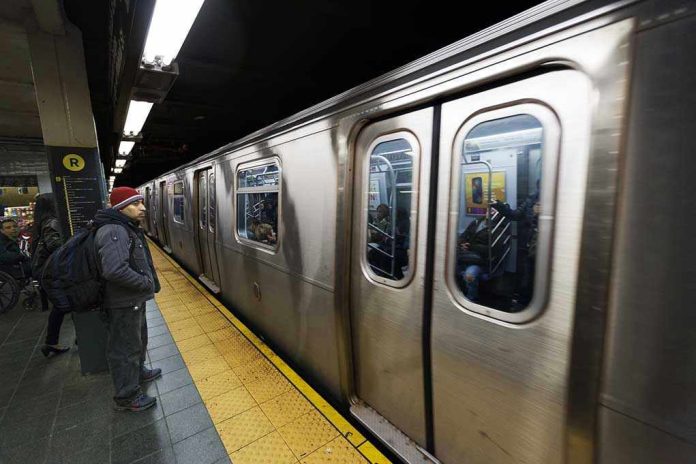
Trump’s decisive move to pull $4 billion in federal funding leaves California’s high-speed rail project teetering on the brink.
At a Glance
- Trump administration cancels $4 billion in federal funds for California’s high-speed rail project.
- Delays, cost overruns, and management issues plague the project.
- The project’s initial budget has ballooned from $33 billion to over $106 billion.
- The decision casts doubt on the future of high-speed rail in the U.S.
Federal Funding Pulled
President Trump announced on July 17, 2025, the cancellation of $4 billion in federal funding for California’s problematic high-speed rail project. Originally conceived in the 1990s and approved by voters in 2008, this rail line was meant to bridge the gap between Los Angeles and San Francisco. Instead, it’s become a costly, unfinished endeavor with a price tag that has skyrocketed from $33 billion to over $106 billion. The decision to cut funding comes amid ongoing project delays, cost overruns, and mismanagement. Critics have long referred to the rail as a “train to nowhere,” and the Trump administration’s withdrawal of funds delivers a significant blow to its future.
The project, initially intended to alleviate congestion and reduce emissions, has only managed to complete 119 miles of construction in the Central Valley. No operational segments exist, and the ambitious vision of connecting major Californian cities appears more distant than ever. This setback raises serious questions about the viability of high-speed rail in America and whether such projects are feasible without stronger management and clearer objectives.
A History of Mismanagement
The California High-Speed Rail initiative was born out of a desire to modernize transport infrastructure and boost the economy. However, from its inception, the project has been fraught with challenges. The 2008 voter-approved plan promised an 800-mile network, but legal challenges, funding gaps, and shifting political support have consistently undermined progress. Starting construction in the less-populated Central Valley has been particularly controversial, as critics argue it prioritized less impactful areas over bustling urban centers that would benefit more from high-speed connections.
California voters and taxpayers have watched the project’s costs balloon and deadlines pass with little to show for the billions already spent. The state’s Legislative Analyst’s Office previously identified the project’s business plan as deficient and lacking in transparency. These findings have fueled skepticism and frustration, particularly among fiscal conservatives who view the project as a glaring example of government overreach and financial irresponsibility.
Implications and Future Prospects
With the withdrawal of federal support, California now faces an uphill battle to secure alternative funding or scale back its grand plans. The immediate impact is likely to be a significant slowdown in construction, particularly in the Central Valley, where work is currently active. For communities reliant on the economic promise of the rail project, this means uncertainty and potential job losses. California taxpayers, already burdened by the state’s high cost of living, may be asked to shoulder even more if the state decides to forge ahead without federal backing.
In the long-term, the project’s viability remains in question. Without federal support, the ambitious goal of connecting Gilroy to Palmdale by 2045 seems increasingly improbable. The broader implications for high-speed rail initiatives in the U.S. are stark; this setback could deter future projects from getting off the ground, reinforcing doubts about their cost-effectiveness and feasibility.
Sources:
California High-Speed Rail Authority
Hoover Institution: California’s High-Speed Rail Was a Fantasy from Its Inception







